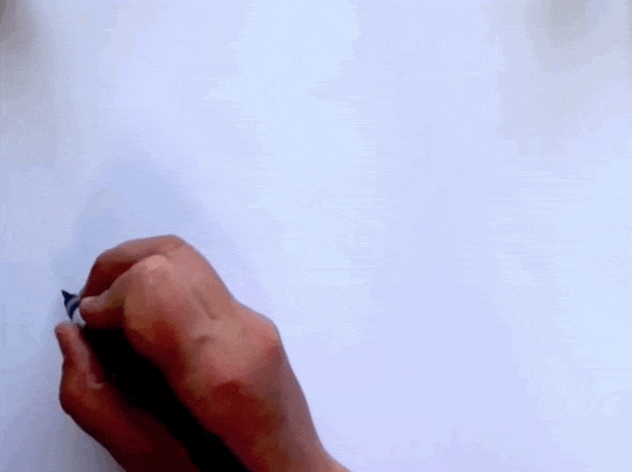1. Use the Right Pen and Paper
Your handwriting depends a lot on the pen you use. Some pens are smooth, while others leak or scratch the paper.
Tips:
-
Use a smooth-writing pen like a gel pen or ball pen.
-
If your letters are big, try a pen with a thicker tip.
-
Choose paper that is not too slippery or too rough.

2. Hold the Pen Properly and Sit Correctly
If you don’t hold the pen the right way or sit in a wrong position, your hand will feel tired, and writing becomes messy.
Tips:
-
Hold the pen gently—not too tight.
-
Rest the pen on your middle finger, and use your thumb and pointer finger to grip.
-
Sit straight with your table just below elbow level.
3. Write Slowly and Neatly
Don’t rush while writing. Fast writing often turns into messy writing.
Tips:
-
Take your time with each letter.
-
Focus on making it clean and clear.
-
Speed will improve with practice—neatness comes first.
4. Make Each Letter the Same Way Every Time
Letters should look the same each time you write them. This makes your handwriting easier to read.
Tips:
-
Practice writing one letter at a time.
-
Check how letters should look (like in school notebooks).
-
Don’t mix cursive and print styles in the same word.
5. Use Lined or Ruled Paper
Lines help you keep your letters the same height and on the same level.
Tips:
-
Use ruled paper to guide your writing.
-
Tall letters (like b, d, h) should touch the top line.
-
Small letters (like a, e, o) should stay between the middle lines.
6. Strengthen Your Fingers
Your fingers need to be strong and flexible for better pen control.
Tips:
-
Squeeze a soft ball or do finger stretches daily.
-
Draw simple shapes like circles or waves to improve control.
-
Write large letters in the air to improve movement.
7. Practice with Purpose
Don’t just repeat writing. Focus on what you’re doing and try to improve.
Tips:
-
Write full sentences, like “The quick brown fox jumps over the lazy dog.”
-
Check what you wrote and try to make the next line better.
-
Notice your mistakes and fix them step by step.
8. Try Different Handwriting Styles
Exploring different ways of writing can help you find the style that suits you best.
Tips:
-
Search online for writing styles like cursive, italic, or modern calligraphy.
-
Choose one and practice it regularly.
-
Don’t copy too many styles at once—stick to one at a time.
9. Keep Your Paper at an Angle
The way you place your paper affects how your writing looks.
Tips:
-
If you’re right-handed, tilt your paper a little to the right.
-
If you’re left-handed, tilt it to the left.
-
Make sure your wrist is comfortable, not bent too much.
10. Practice Every Day
Like anything else, handwriting improves with daily effort.
Tips:
-
Write one paragraph a day in a notebook.
-
You can copy quotes, poems, or your own thoughts.
-
In just 2–3 weeks, you’ll see big changes.

How useful was this post?
Click on a star to rate it!
Average rating 0 / 5. Vote count: 0
No votes so far! Be the first to rate this post.